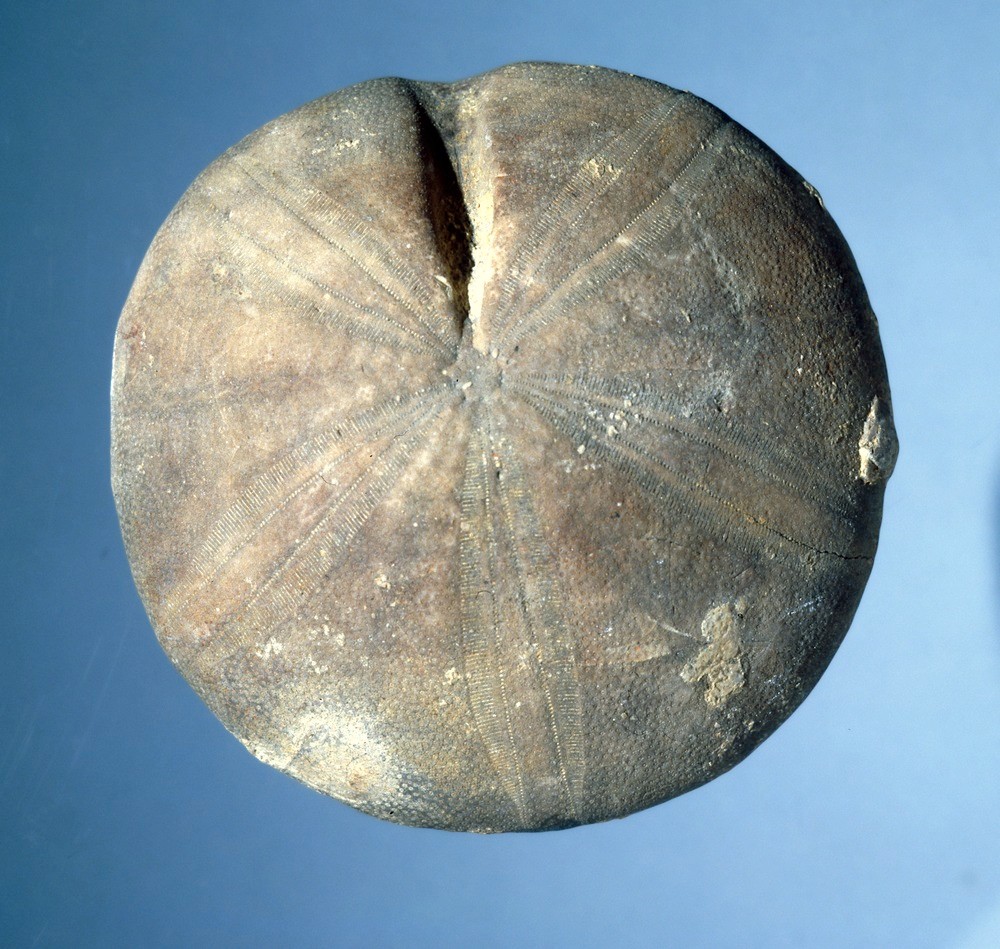| P number: | P550279 |
|---|---|
| Caption: | Clypeus ploti, a fossil echinoid. |
| Description: | Clypeus is a echinoid that is found in Jurassic deposits of Europe and Africa. It first evolved during the mid-Jurassic (Bajocian) about 170-175 million years ago and went into extinction during the late Kimmeridgian (Kimmeridgian) about 150 million years ago. The illustrated species, Clypeus ploti, evolved during the mid-Jurassic. It is an irregular echinoid, although it is almost circular in shape and forms a low dome. It has long, broad petal-shaped plates comprising the ambulacra, with slit-like pores and pairs of very large pores. The furrow at the front is deep and clearly visible in the illustrated specimen. Echinoids (sea urchins) have lived in marine habitats since the Ordovician times, about 450 million years ago. They still live today, inhabiting many shallow, near shore seas around the world. As fossil echinoids resemble living species, we have an idea how they must have lived. They had spines which are used for protection. Some species protected themselves from carnivores by having poison-tipped spines while others had large, unpalatable solid spines. Echinoids burrowed into the sand or crawled over the sea floor on their tubed feet, which extended from the paired pores on the star-like or petal-like areas (the ambulacra). They grazed and scavenging algae and plants or ate small particles in the sandy substrate. |
| Photographer: | Unknown |
| Copyright statement: | Unknown |
| Orientation: | Landscape |
| Size: | 520.41 KB; 1000 x 949 pixels; 85 x 80 mm (print at 300 DPI); 265 x 251 mm (screen at 96 DPI); |
| Average Rating: | Not yet rated |
| Categories: | Best of BGS Images/ Fossils |
Reviews
There is currently no feedback

